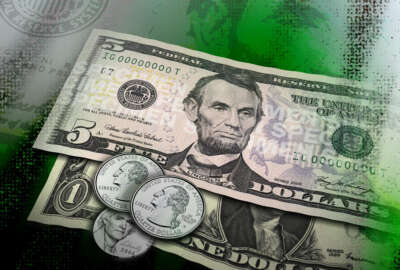
January raise: Don’t spend it yet, but …
The likely amount is now a 3.5% bump up in January 2021, but anything could happen.
Although the don’t-spend-it-yet-rule still applies, as always, it appears white collar federal workers are heading for their biggest pay raise in memory. The likely amount — a 3.5% bump up in January 2021.
It could be across the board, or more likely divided between a flat general raise for all with an amount set aside for city-by-city locality pay adjustments. Postal employees and members of Congress would not be included in the increase.
Feds got a 2.6% increase this January, the biggest since the 2.9% raise in January 2009. In between there were three years (2011, 2012, 2013) when there were no pay raise followed by four straight years when the increase was 1% each year.
Reading legislative and budget tea leaves in February, in an election year, is tricky stuff even in so-called normal times. Add to the mix the potential of a coronavirus pandemic, an especially divisive national election and, as always, Iran and North Korea and you get a clouded crystal ball at best. But there are positive signs.
For example, this time last year the Trump administration was silent on federal pay although talking about more selective raises targeted to performance. Yet by August, the traditional time to send Congress a pay package, the administration decided to go with the 2.6% increase pushed by House Democrats. Earlier this month told Congress that under the Federal Employees Pay Comparability Act of 1990 formula, feds would be due $21 billion in general (2.5%) and locality raises next year that would not be affordable.
FECPA was approved by a Democratic-controlled Congress and signed into law by President George H.W. Bush. But it has never been fully implemented. President Bill Clinton, stunned by the level of federal pay in Washington, first proposed a zero pay raise over the amount recommended by the FEPCA formula. He continued to propose lower raises during his time in office and George W. Bush, who succeeded him, did the same. Congress, pushed by federal unions, repeatedly gave feds more than the White House but less than the FEPCA formula called for each year.
Election years are also different. Democrats in Congress are usually more generous with federal pay raises when a Republican is in the White House, and Democrats control the House right now.
Federal News Network reported earlier that while presidents usually wait until August to announce pay plans, Trump surprised many by proposing the 1% amount this month. Just last year he reversed course, proposing a 2.6% raise in August — the amount feds eventually got — instead of the zero amount he called for in his budget.
A former lobbyist who tracked federal pay for three decades said, “… assuming people and events don’t zig when they should have zagged I would say the 2.6 figure looks solid — with the caveat that this is Washington!”
Nearly Useless Factoid
By Amelia Brust
Native English speakers unconsciously organize adjectives in a particular order that is rarely deviated from, even in informal speech. The order is: opinion, size, age, shape, color, origin, material, purpose. For example, it’s more common to hear “silly old fool,” rather than “old silly fool.” One notable exception, however, is the Big Bad Wolf.
Source: The Guardian
Copyright © 2025 Federal News Network. All rights reserved. This website is not intended for users located within the European Economic Area.
Mike Causey is senior correspondent for Federal News Network and writes his daily Federal Report column on federal employees’ pay, benefits and retirement.
Follow @mcauseyWFED





